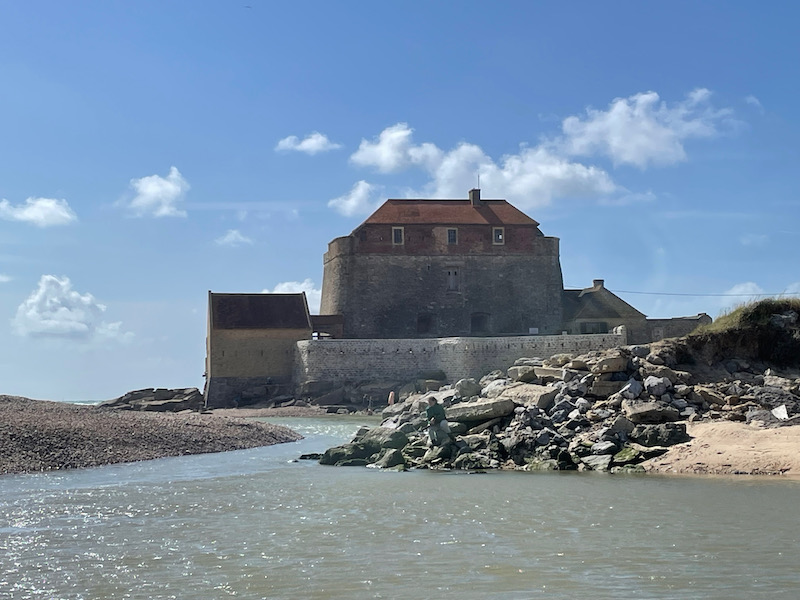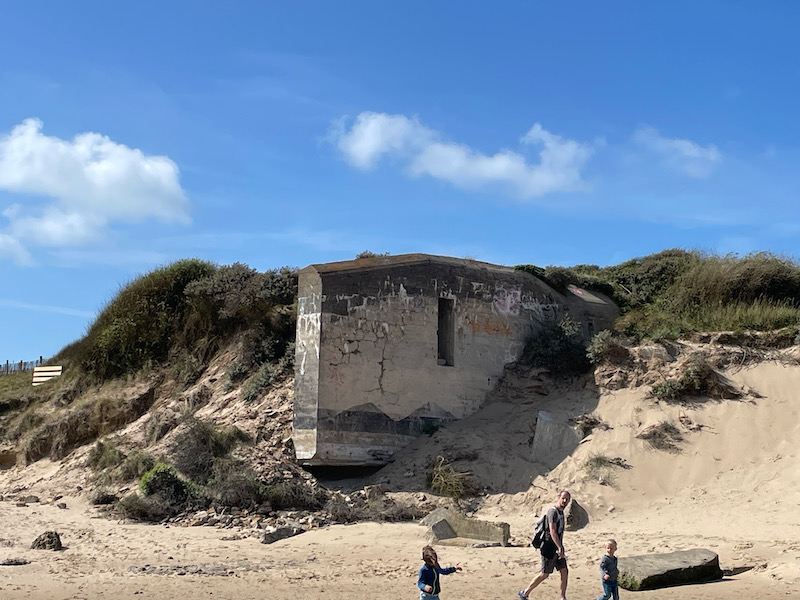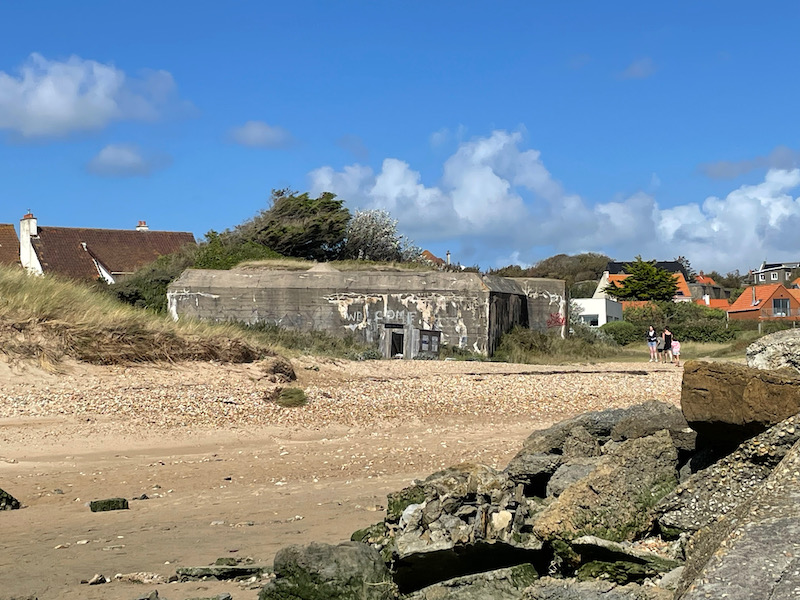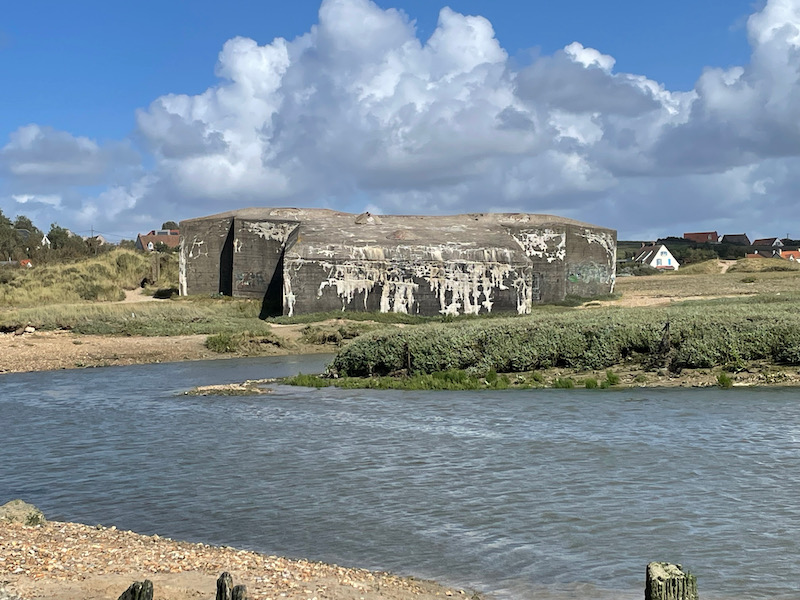Our Blog - AugustTrip - Week 3 - along the French side of the English Channel
After coming back across the English Channel, we spent our 3rd week in the town of Wimille (pronounced like We-Mill) in a little single-family house. It had a nice back yard for Lucy to play in and was very convenient to the various towns and cities that we wanted to visit.
The nearest "big" city was Boulogne-sur-Mer, which has a nicely preserved upper town with a castle, but then also a lower-town with the various shops and markets that we needed to get groceries.
There are several bays along the coast. Most of these, although they are named "Bay", they are really estuaries. We headed to a couple of them. The first is the town of Saint-Valery-sur-Somme which is on the Somme Bay. It is a large estuary which drains 6 rivers into the English Channel, the main river being the Somme River. When the tide is out, the Bay is characterized by wide, flat areas of marsh and sand with small ponds, dug into the marshes and filled with fake plastic ducks that are used to attract migratory birds for hunting. As the tide rises and the bay fills, numerous working, leisure and tourist boats cross between the surrounding villages.
Heading north from there, we did a guided tour of The Bay of Authie. Here, we walked out into the flat marsh and sand area at low tide, and got to see the flora and fauna. Some, like salicorne, are edible and harvested by people. There are also the hunting ponds with huts hidden in the dunes.
We also took Lucy to play on the Wimereux Beach and also headed into the town of Wimereux to look at the seaside villas. We caught the Flobart Festival at the town of Wissant and walked around the town where French President Emmanuel Macron votes, the resort town of Le Touquet.
A couple inland towns now, first one being the town of Montreuil that used to be called Montreuil-sur-Mer. Then the town of Rue which gets its name from the word meaning "Street".
Keeping inland, we went to the Audomarois marshes for a walk through the town of Saint-Omer before taking a boat ride in a traditional wooden boat called a "bacove".
And a last bit of puppy-playtime, this time at Fort Ambleteuse. It was built in 1680 at the mouth of the Slack River (which you can see snaking around). It is far enough out that the site is only accessible during low tide. During World War II Fort Ambleteuse was occupied by the German forces. They installed artillery and concrete pillboxes, which are still visible. In 1945, 2 sea mines exploded, destroying the outer defenses.




Here is Lucy, again enjoying the water. We didn't get to play for very long as the tide was coming in very quickly.